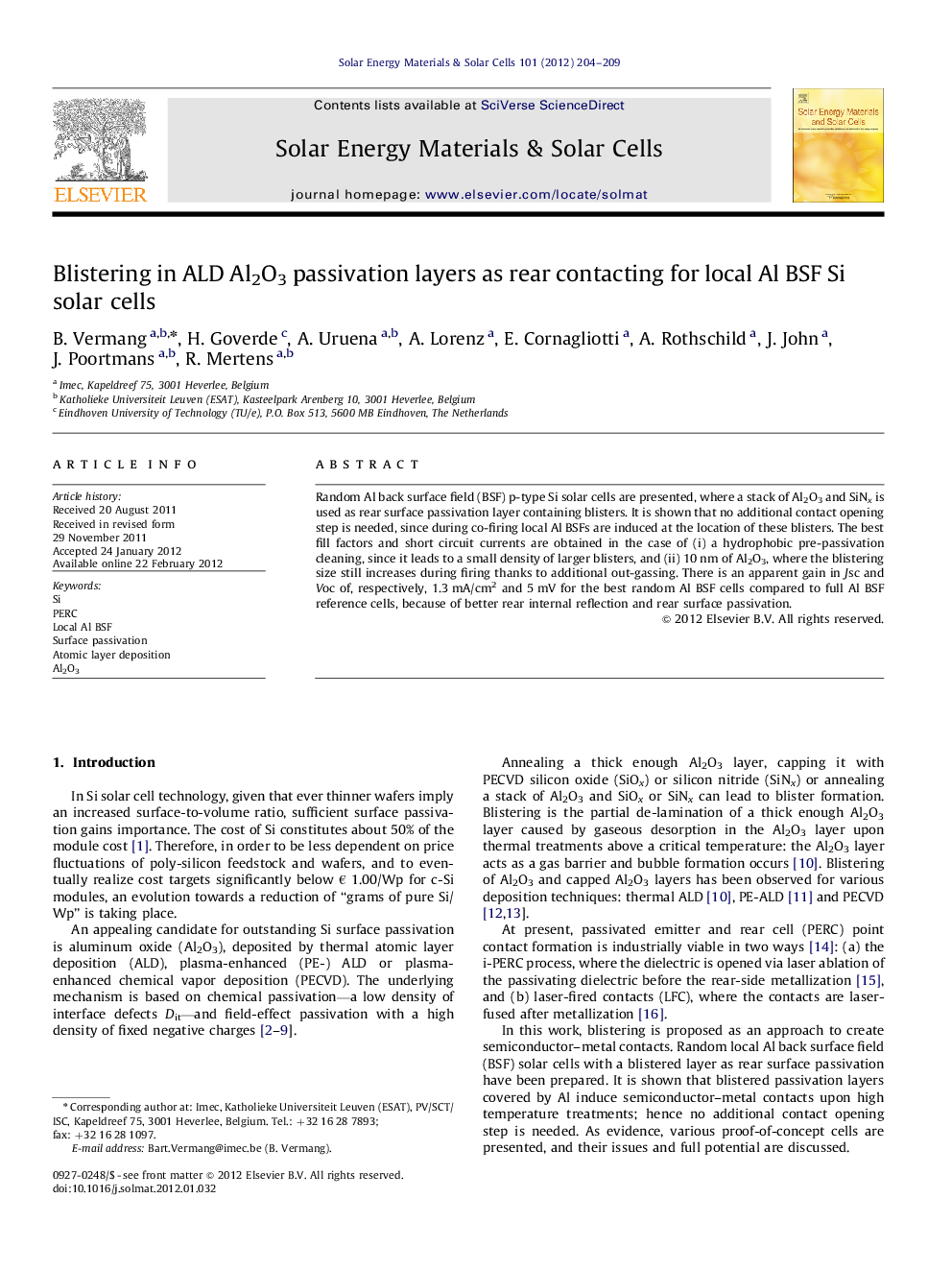| Article ID | Journal | Published Year | Pages | File Type |
|---|---|---|---|---|
| 79298 | Solar Energy Materials and Solar Cells | 2012 | 6 Pages |
Random Al back surface field (BSF) p-type Si solar cells are presented, where a stack of Al2O3 and SiNx is used as rear surface passivation layer containing blisters. It is shown that no additional contact opening step is needed, since during co-firing local Al BSFs are induced at the location of these blisters. The best fill factors and short circuit currents are obtained in the case of (i) a hydrophobic pre-passivation cleaning, since it leads to a small density of larger blisters, and (ii) 10 nm of Al2O3, where the blistering size still increases during firing thanks to additional out-gassing. There is an apparent gain in Jsc and Voc of, respectively, 1.3 mA/cm2 and 5 mV for the best random Al BSF cells compared to full Al BSF reference cells, because of better rear internal reflection and rear surface passivation.
► PERC-like processing eliminating an additional contact opening step. ► Using blistering of Al2O3 based stacks to create semiconductor–metal contacts. ► Blistered dielectrics covered by Al induce semiconductor–metal contacts upon firing. ► Efficiency improvement of 0.8% absolute compared to full Al BSF reference cells. ► Better rear internal reflection and rear surface passivation.
